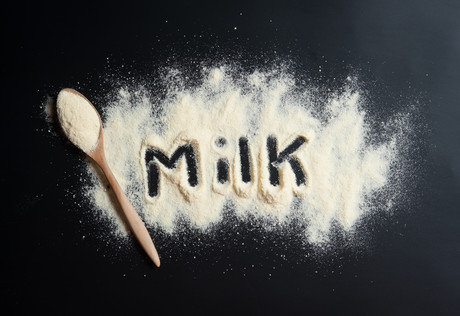Minimise spore counts in milk powder

Typically spore counts in spray dried milk powder increase exponentially through each production run. A process that minimises this increase has just been patented.
Caloris has patented its low-spore powder production process in the US. US Patent No. 10,182,580, System and method for production of low thermophile and low spore milk powder, details a robust processing sequence that minimises an increase in spore counts throughout the critical processing steps, while maintaining continuity of the production process.
In a typical process, spore-forming microorganisms present in the raw milk establish biofilms particularly in the feed preheating and initial product concentration sections of the evaporator throughout each production run. After maturing for about 10 hours, these biofilms start to release spores into the milk, resulting in significantly increased spore counts through the remainder of the production run. The Caloris Low-Spore Process simply takes away the opportunity for the microorganisms to establish biofilms and release spores into the finished product.
The key to the Caloris process is well-timed evaporator system CIP cycles, which eliminate the presence of mature biofilms during operation and thereby prevent contamination of the milk product with spores. The configuration of the process allows these CIP cycles to occur without interrupting the powder production of the spray dryer system.
Thorough cleaning just as the biofilms begin to reach maturity prevents any significant contamination of the product with spores from biofilms. This also provides the added benefits of cleaning evaporator surfaces before they develop any significant solids fouling, allowing the evaporator to consistently operate at highest energy efficiency throughout the day, minimising the soiling of recovered CIP chemicals and requirements for fresh make-up chemicals, and reducing the daily loading of waste solids discharged to the plant waste treatment systems.
To avoid any disruption to downstream spray dryer systems from frequent evaporator CIP cleanings, the Caloris Low Spore Process separates the initial pre-evaporator systems from the subsequent high concentration evaporator and spray drying systems. These pre-evaporator systems operate at around 20% above the capacity of the downstream high concentrator and spray dryer systems, producing an inventory of skim condensed sufficient to maintain uninterrupted spray dryer operation for two hours.
After a specific period of operation on product, the pre-evaporator systems undergo a complete CIP cycle (product-to-product) within a period of two hours, returning to production of skim condensed before the inventory supplying the spray dryer system is depleted. In the high concentration evaporator and spray dryer feed system components, the higher solids concentration suppresses the rate of biofilm formation and maturation, allowing those systems to operate continuously for longer periods of time without biofilms contaminating product.
This process won the 2018 American Dairy Products Institute Breakthrough Award for Dairy Ingredient Innovation.
Kokumi chemistry for rich-tasting sparkling wines
Kokumi compounds can bring a richness of flavour to foods like cheese, but now scientists have...
From cream to clean: ice cream maker implements organic wastewater solution
An ice cream manufacturer transitioned from traditional aluminium-based coagulants to a...
Maximising yield and minimising waste in dairy processing
Rockwell Automation Model Predictive Control technology is designed to optimise dairy processes...











